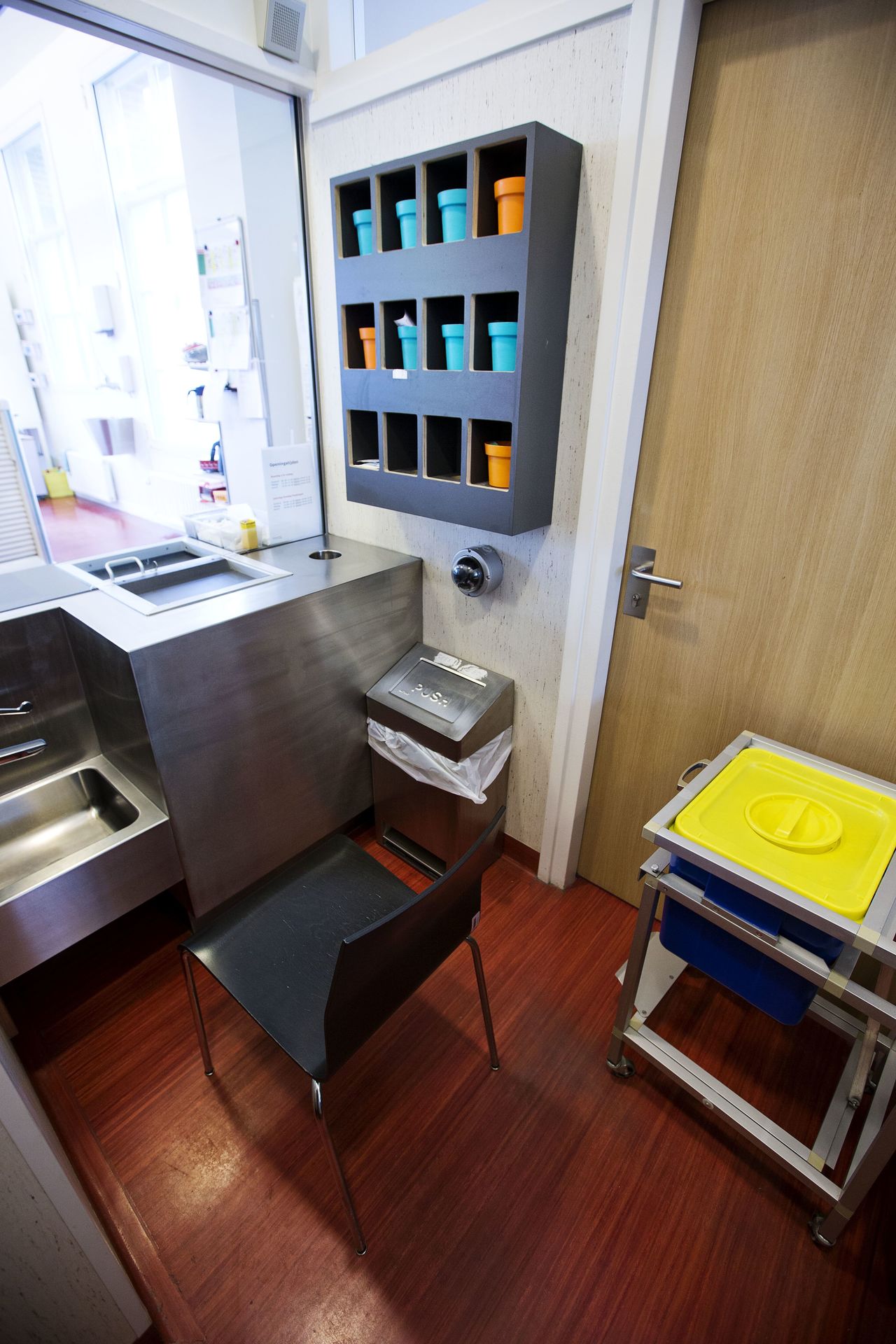Across the United States, heroin users have died in alleys behind convenience stores, on city sidewalks and in the bathrooms of fast-food joints — because no one was around to save them when they overdosed.
An alarming 47,000 American overdose deaths in 2014 — 60 percent from heroin and related painkillers like fentanyl — has pushed elected leaders from coast to coast to consider what was once unthinkable: government-sanctioned sites where users can shoot up under the supervision of a doctor or nurse who can administer an antidote if necessary.
“Things are getting out of control. We have to find things we can do for people who are addicted now,” said New York state Assemblywoman Linda Rosenthal, who is working on legislation to allow supervised injection sites that would also include space for treatment services. “The idea shouldn’t be dismissed out of hand. I don’t see anyone else coming up with anything new and innovative.”
Critics of the war on drugs have long talked about the need for a new approach to addiction, but the idea of allowing supervised injection sites is now coming from state lawmakers in New York, Maryland and California, along with city officials in Seattle, San Francisco and Ithaca, New York, who note that syringe exchanges were once controversial but now operate in 33 states.
While such sites have operated for years in places such as Canada, the Netherlands and Australia, they face significant legal and political challenges in the U.S., including criticism that they are tantamount to waving a white flag at an epidemic that should be fought with prevention and treatment.
“It’s a dangerous idea,” said John Walters, drug czar under President George W. Bush. “It’s advocated by people who seem to think that the way we should help sick people is by keeping them sick, but comfortably sick.”
But proponents argue such sites are not so radical outside the U.S., pointing to examples where they offer not only a place to shoot up, but also health care, counseling and even treatment beds. In many cases, the users are there to shoot up heroin or dangerous opioids like fentanyl, though some take painkillers in pill form.
At Sydney’s Medically Supervised Injecting Centre, more than 5,900 people have overdosed since it opened in 2001. No one has died. It’s the same at Insite in Vancouver, British Columbia. About 20 overdoses happen there every week, but the facility, which is jointly operated by a local nonprofit and the Vancouver Coastal Health Authority, has yet to record a death.
“A big fat zero,” said Insite site coordinator Darwin Fisher.
Sydney’s facility is tucked between a hostel and a Chinese restaurant in Kings Cross, the city’s red-light district. Aside from the security guard posted just inside the front door, it looks like a typical health clinic.
At least two staffers, including a registered nurse, monitor the injection room. They are not allowed to administer drugs, though sterile needles are provided. If a patient overdoses, the nurse delivers the antidote Narcan, which quickly reverses the overdose.
After users get their fix, they head to a second room with a decidedly warmer feel. Colored Christmas lights hang from the ceiling; books and magazines line the shelves. Clients can relax with a cup of coffee or tea or talk to staff. Some stay for 15 minutes; others spend hours. They exit through a back door to protect their privacy.
The center opened on an 18-month trial basis following a sharp increase in heroin use in Sydney. The trial was repeatedly extended by government officials until 2010, when it was granted permanent status. It’s run by the social services arm of the Uniting Church and is funded by police-seized proceeds of various crimes.
A clinic in Amsterdam — one of three injection sites in the Dutch capital — goes even further, distributing free heroin to long-term addicts as part of a government program created for hardened addicts who might otherwise commit a crime to pay for their fix.
About 80 users visit up to three times a day. Most are men, and the average age is 60. Many began using in the 1970s and 1980s.
“We would ideally like them to cut back their use,” said Fleur Clarijs, a doctor at the facility.
But, she said, the main objective of the facility is to reduce risk to users — and their effects on the community.
In Vancouver’s seedy Downtown Eastside neighborhood, Insite offers patients treatment services just up the stairs from where they shoot up. About a third of Insite’s visitors request referral to a detox program, the clinic said.
A woman who gave her name as Rhea Jean spoke to The Associated Press after recently injecting herself there. She felt nauseous and ran outside to the curb to vomit. Her face covered with scabs, the longtime heroin user looks far older than her 33 years.
“It’s a great place for active users in full-blown addiction. It links you up to other programs,” said Jean, who herself hasn’t sought treatment through Insite.
A 65-year-old man who gave his name only as James because he’s in a 12-step program that requires anonymity said he has been using heroin since age 22. He was clean for 17 years before relapsing; he said he was sexually abused as a child and spent 23 years in prison.
He keeps returning to heroin, he said, because it provides release from his problems. Insite is the one place he can go and be treated if he reacts badly to the drug, he said.
“They saved my life three times,” he said, adding that addiction shouldn’t be demonized.
“There’s a large section of society that still refuses to accept it as a disease,” he said.
The three clinics visited by the AP initially faced opposition from politicians and members of the public but gradually won support, in part because of studies showing reductions in overdose deaths and open-air drug use in the surrounding community.
A 2010 survey of residents and businesses in Kings Cross, for instance, found strong support.
Insite was targeted for closure by Canadian Prime Minister Stephen Harper and his Conservative Party. The case went to the Supreme Court of Canada, which in 2011 told the government to issue an exemption to the drug laws allowing Insite to operate.
“Insite saves lives,” Chief Justice Beverley McLachlin wrote in the decision. “Its benefits have been proven. There has been no discernible negative impact on the public safety and health objectives of Canada during its eight years of operation.”
Advocates in the U.S. have long discussed the potential benefits of injection sites — but they point to the tripling of heroin and opioid overdose deaths since 2000 as one reason why the suggestion is starting to get serious consideration.
The deaths of actors Philip Seymour Hoffman and Heath Ledger put celebrity faces on the risks of overdosing alone, and it was revealed recently that representatives for Prince sought help for his addiction to painkillers just a day before the musician was found dead.
In an effort to stay safe, some addicts are taking matters into their own hands. In Boston, after Massachusetts General Hospital equipped security guards with Narcan, the hospital began seeing an uptick in addicts shooting up in bathrooms and parking garages.
Elsewhere in the city, a nonprofit recently set aside a room where addicts can go after using drugs. The users can’t inject there, but a nurse monitors those in the room and will intervene in case of overdose.
U.S. federal law effectively prohibits injection facilities, but supporters say that if a state or city were to authorize one, Washington officials could adopt a hands-off approach similar to the federal response to state medical marijuana programs.
Kevin Sabet, a former drug policy adviser to the Obama administration, put the chances of injection sites getting approval anytime soon at zero. He believes supporters want full legalization of all drugs and are exploiting the opioid crisis to advance their agenda.
California Assemblyman Tom Lackey, who served on the California Highway Patrol for 28 years, said he understands that supporters are looking for a new approach. But he has deep reservations about legislation in his state which would create clinics where users could use heroin, crack or other drugs.
“These facilities send a message that there is a safe use, and I don’t think there is any safe use of heroin,” he said.
In Maryland, state House of Delegates member Dan Morhaim is an emergency physician who himself has administered Narcan “many, many times.” He sees his bill for supervised injection sites as just one of many creative approaches that will be needed to solve the heroin problem.
“It’s not going to cure everyone,” he said. “But moving people from more dangerous behavior to less dangerous behavior is progress.”
Marianne Jauncey, medical director at Sydney’s Medically Supervised Injecting Centre, said she would prefer better ways to help hardened addicts. Her facility will work to keep them alive until that happens.
“Given their histories,” she said, “I think the least that we can do as a society is try.”
Talk to us
> Give us your news tips.
> Send us a letter to the editor.
> More Herald contact information.

























